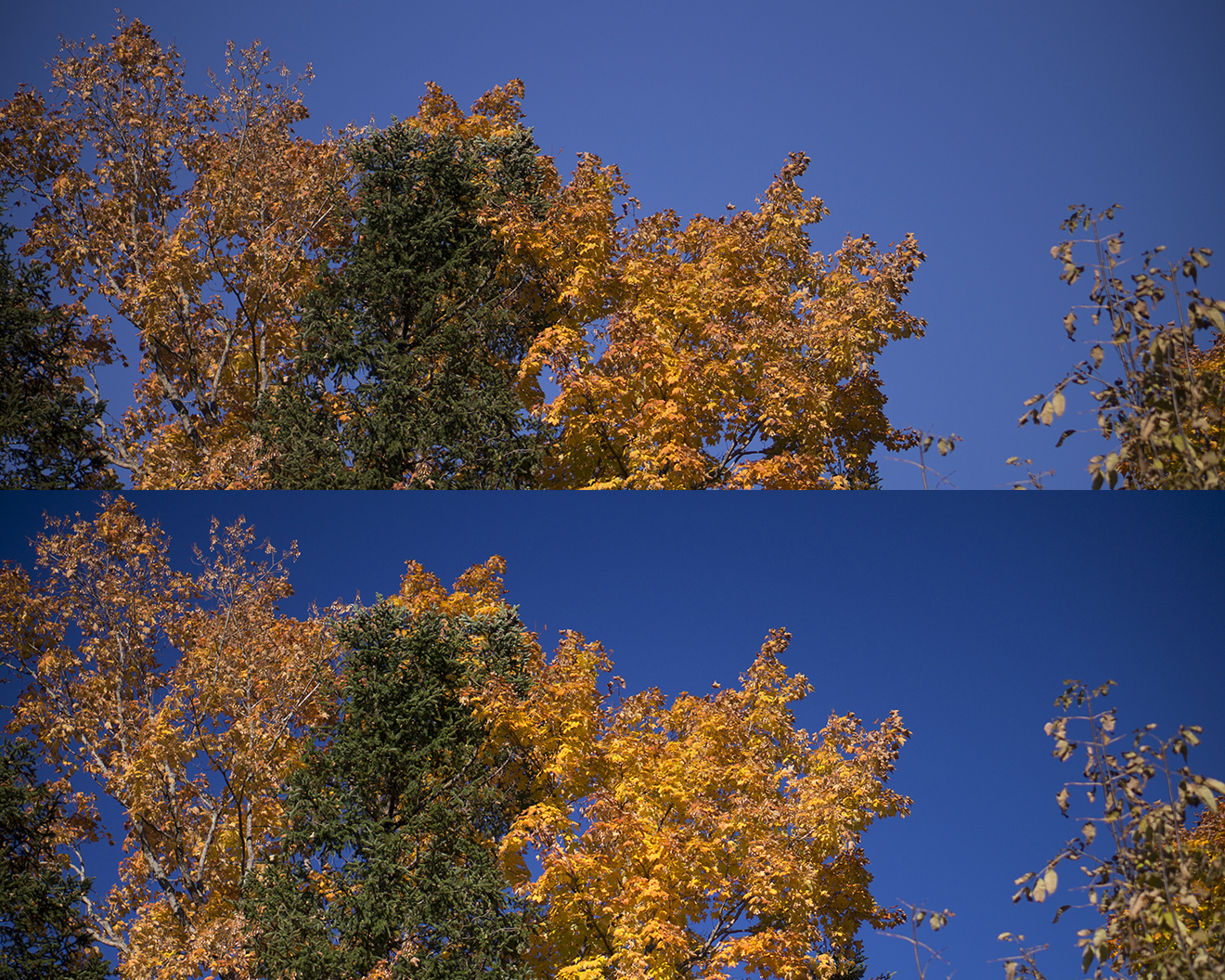Late this summer I decided that I should take advantage of a family heirloom. Since the early sixties my family has owned a cabin in the Northeast Kingdom, northern Vermont to those not from these parts. Leaf peeping drives the local tourism economy around here during the fall and photography is a huge part of the experience. I approached this trip as an experienced photographer but a novice foliage artist, with a goal to provide some insight and inspiration; to help those other new comers who are following the leaves’ colorful march south. As a challenge of my to myself I decided to leave behind my normal selection of lenses and travel light, with only three prime lenses. I find it hard to look at a beautiful scenic landscape and not want to shoot it five different ways. In doing so I sometimes miss the form and contour of the land and instead focus on expanse and fine details. So for this trip I made a rule, no wide lenses. My selection included only the equivalent focal lengths of 50mm, 75mm, and 135mm on my APS-C camera (Sony’s very impressive NEX-6). I often feel that these sorts of challenges help to spur my creativity by forcing me to deviate from my normal habits.
The trip took place just before peak color took hold of the area. The combination of reds and golds bend in with the natural greens and provide some intense contrast, even on the same tree.
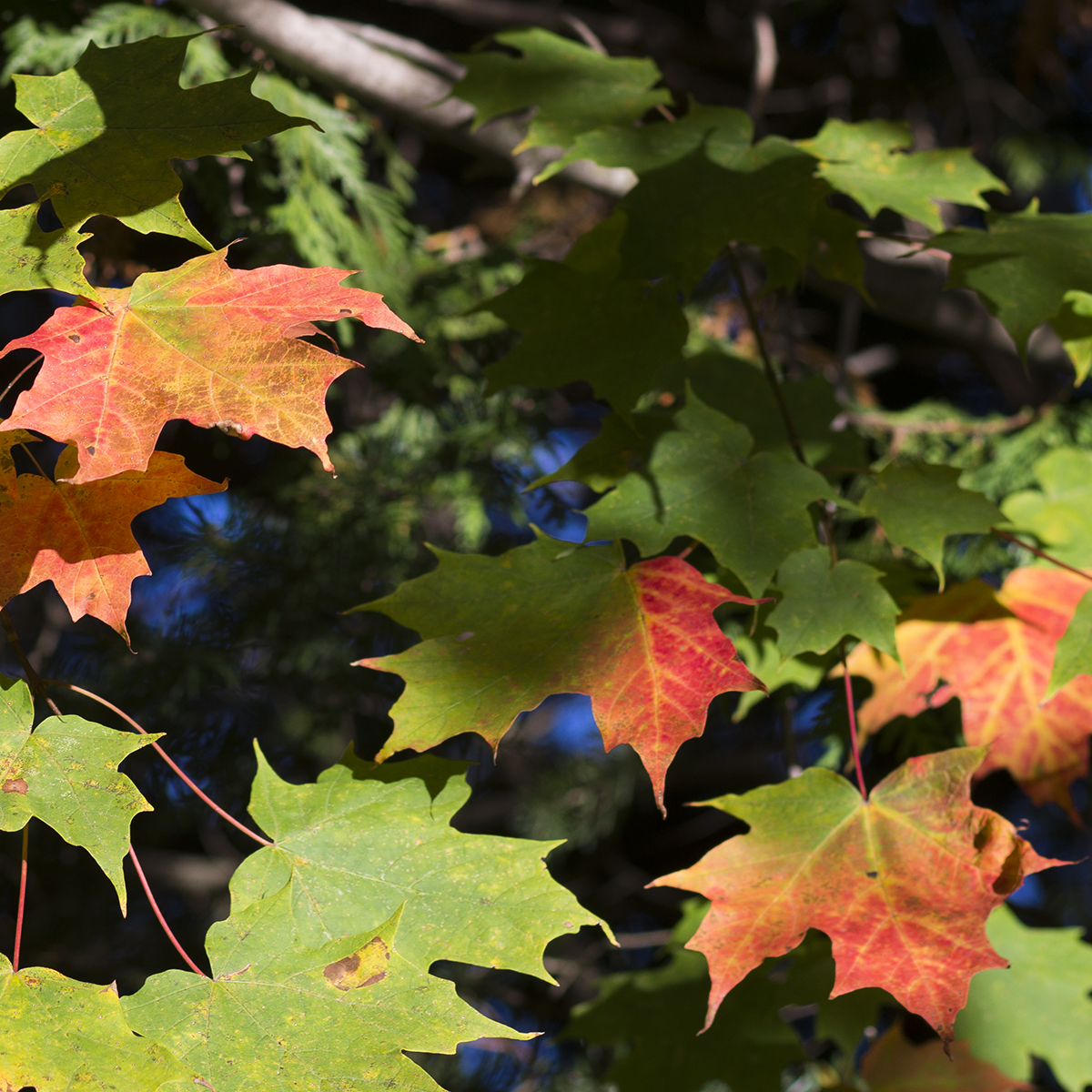
The combinations of colors are eye catching and underscore the dramatic changes occurring during this time of year. Keep your eyes peeled for these dramatic shifts, with certain trees their leaves change to an almost neon green as they transition to gold. So many things in nature are brown and dull, a touch of wild almost unnatural color can really make an image.
I hold as a cardinal rule that for every landscape and nature photograph I should turn around and take one in the exact opposite direction. Sometimes the artistic eye sees things that don’t turn out to be quite so photogenic. I saw a glimmer in the side view mirror of my car while driving down a very secluded dirt road. The resulting photos didn’t inspire me nearly as much as the off the cuff shot I got when I turned around.
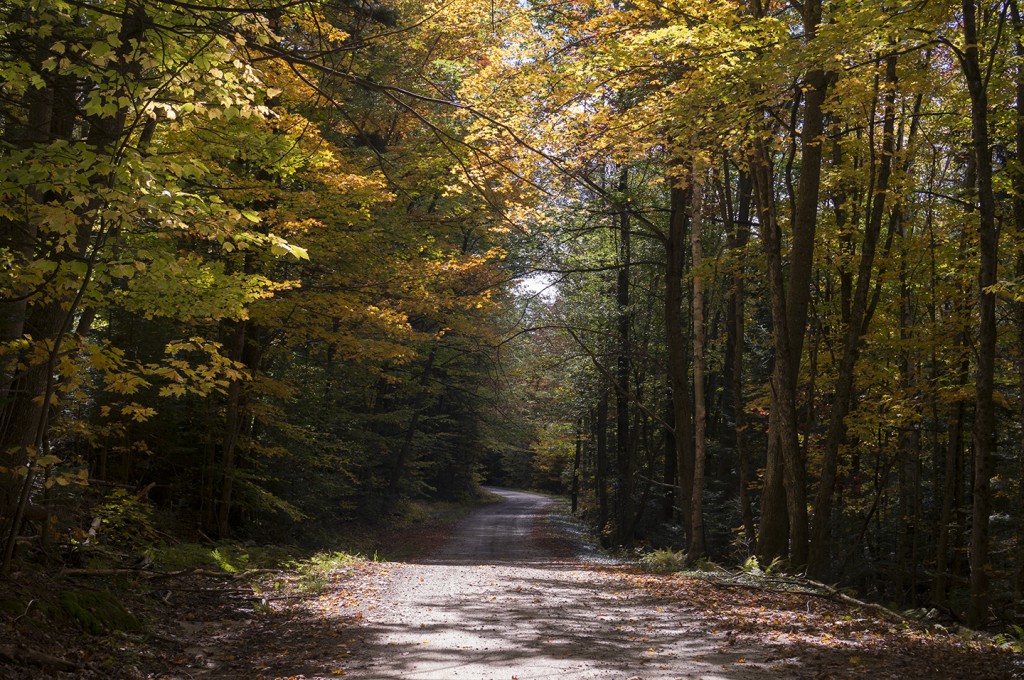
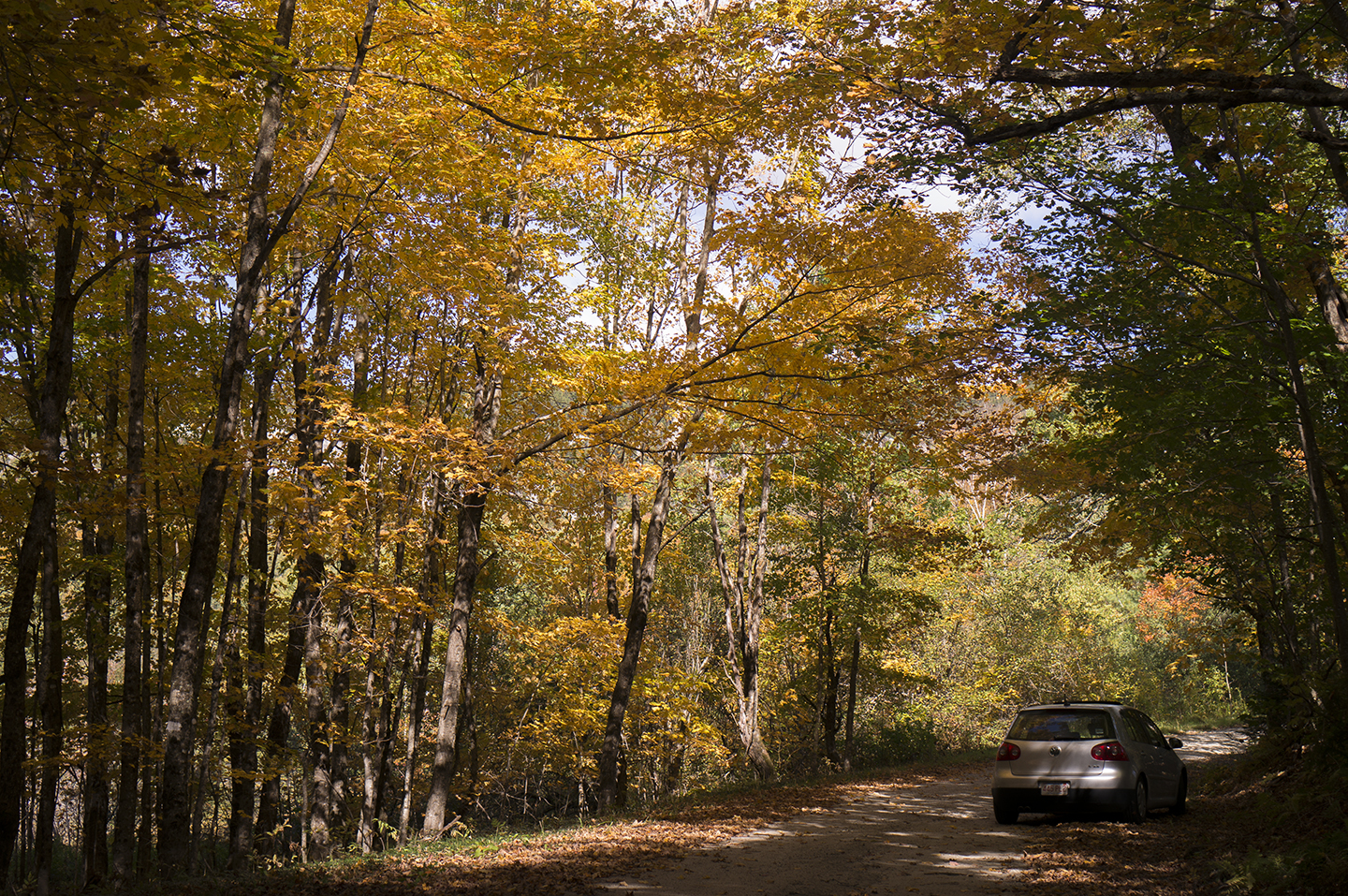
Unfortunately I was blocking part of a narrow road with traffic approaching, hence the car in the photograph.
While I’m talking about rules of thumb, I generally have a circular polarizer on my lenses at all times. I have found that there is rarely an occasion where outdoor photographs look worse with a polarizer; richer, sharper blues and a much better contrast between sky and clouds, what’s not to love? Add to that a polarizer’s power to eliminate glare off of reflective surfaces and even foliage can look better with than without.
These two pictures differ only in the rotation and therefore amount of polarization, the exposures, aperture and shutter are all the same. The leaves are slightly reflective and this glare can have a softening effect on the colors. The contrast with the sky also accents the bright yellow/orange leaves.
Lastly, I felt it only appropriate to mention the fact that shot quite a few images with my cell phone. To many, including myself, the thought of using a cell phone instead of the perfectly good camera at my side is abhorrent. There are a few useful things that can be done with them. The preponderance of apps available for smartphones allow us to add a layer of individualization to our photographs that is usually reserved for big dollar camera set-ups and expensive software. Personally, I am a huge fan of panoramic photographs and while I think nothing of spending an hour setting up my camera, lens, tripod and pano head, as well as a particularly handy pano calculator app for my cellphone, the panoramic capabilities of the newest smartphones is breathtaking.

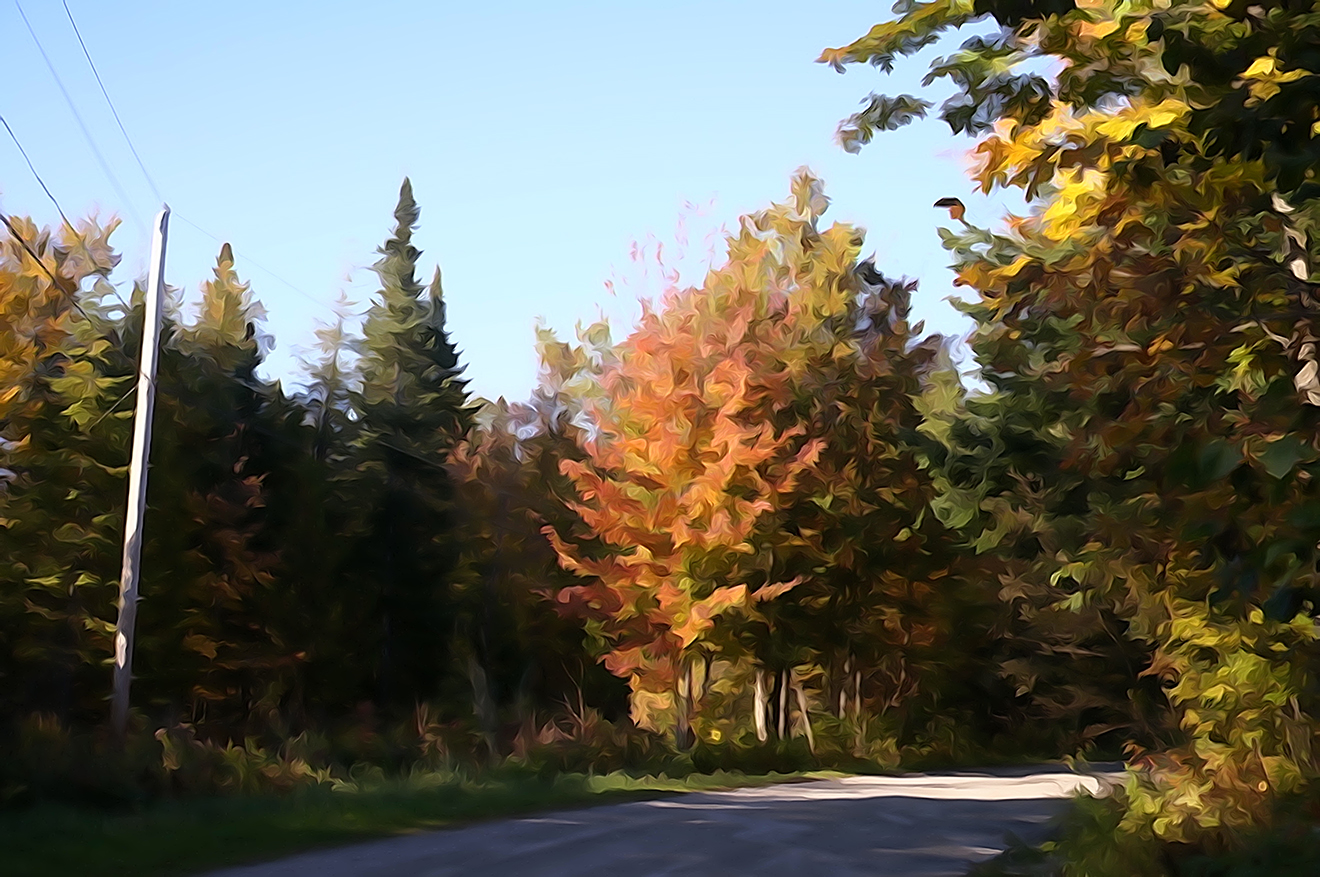
The fall is one of my favorite times of the year. The weather is usually very agreeable, the natural colors are beautiful, even the sun seems to want to bless us photographers with softer and more flattering light during the late afternoon. Whether as a backdrop for or the subject of, this time of year can produce some of the most striking photographs.
